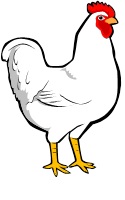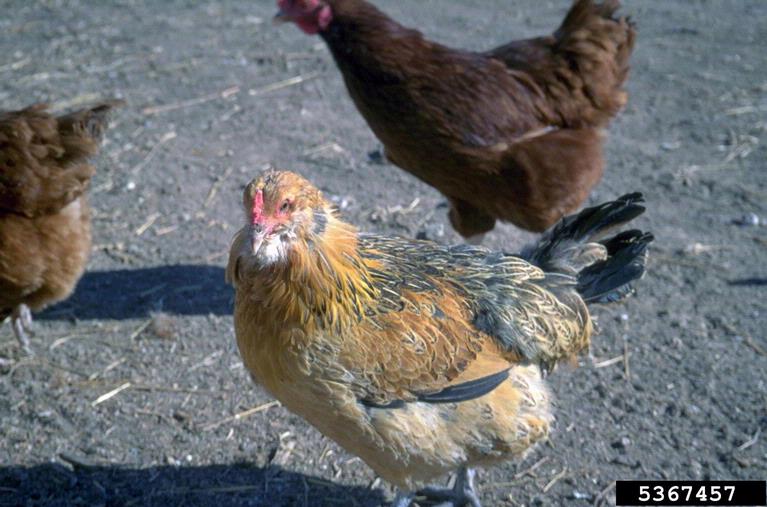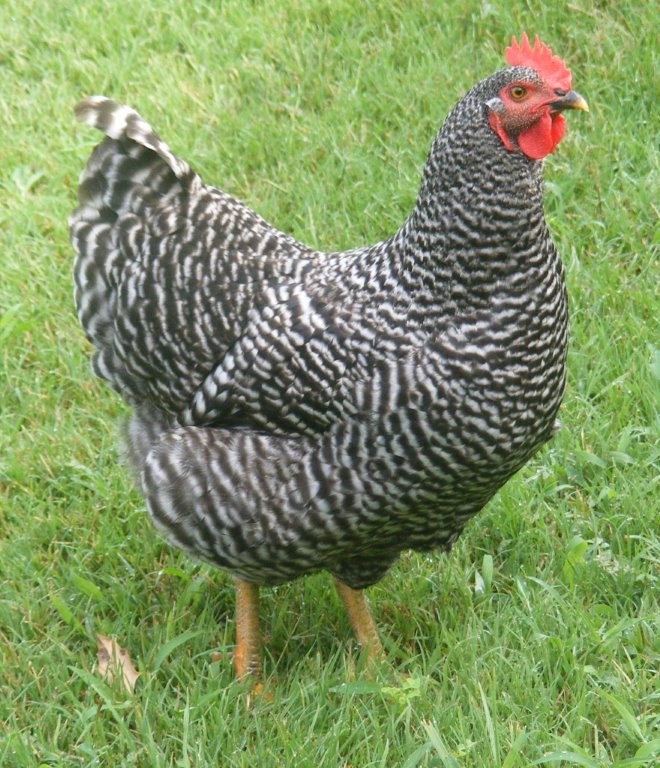 Benefits of Backyard Poultry - July 12, 2017 Jeff Schalau, Agent, Agriculture & Natural Resources University of Arizona Cooperative Extension, Yavapai County Many gardeners live in rural areas with space (and zoning) that will allow small poultry flocks. Poultry can benefit gardeners in several ways: 1) food from eggs and/or meat; 2) weed control; 3) insect/snail/slug control; and 4) nutrient-rich manure that can be composted or used as a garden soil amendment. Beside these benefits, home food production is fun, educational, and rewarding. Poultry will also attract predators and must be protected from raccoons, skunks, coyotes, bobcats, birds of prey, and your neighbor’s dogs. For gardening and manure production, a small flock of chickens is ideal. Manure can be collected inside the pen and the night roosting area (chicken house). Free ranging chickens also fertilize the area, but it’s difficult to collect the manure (except on the bottoms of your shoes). Chicken manure contains a good balance of essential plant nutrients. On average, it will have about 1-2% nitrogen, 1-2% phosphorus, and 1% potassium. If chicken manure is directly incorporated into soil, planting should be delayed for one or two months. If composted, the nitrogen in the manure will enhance biological activity and consequent breakdown of other materials. An egg-producing chicken flock should be replaced every three or so years to maintain production levels. Buy chicks from reputable sources. Local feed stores usually get chicks in early spring. However, catalogs ship day-old chicks via air mail through summer and into fall. Some suppliers will determine sex of the chicks (with about 95% or greater reliability) which generally costs a little more. By the way, you do not need a rooster to produce eggs. In fact, the absence of roosters may be greatly appreciated by your neighbors. Young chicks need lots of care during the first few weeks and you should be prepared for them when they arrive. Reputable suppliers will provide feeding and care instructions. The smaller the hen, the more efficient her production which also lowers your feed cost per dozen eggs. Leghorns and sex-link crosses are chicken breeds developed for egg production and disease resistance. Most pullets come into egg production at 20 to 24 weeks or age. You should expect to get a dozen eggs from four to five pounds of feed. My wife and I are on our fifth flock of chickens. Breeds we prefer for egg production include Ameraucanas, Plymouth (Barred) Rocks, and Rhode Island Reds (we’ve tried many others). We use pine shavings or shredded paper as bedding inside the chicken house and subsequently compost this soiled bedding with our other garden and household waste. We also rake out the pen and compost the manure we collect. Our chickens free-range about a third of the time in our fenced yard and are shut in each night to protect them from predators. Their coop area is completely enclosed by poultry wire and we’ve never lost a bird in this enclosure. Over the years, chickens have been killed while free ranging in our fenced yard. Last year I watched a bobcat carry a hen to the fence while our dogs were chasing it, but the cat let the chicken go before jumping the fence. The hen was dazed but survived. Our vegetable garden is also fenced to exclude the chickens, but they have access to the entire garden perimeter. I like to think this arrangement helps control insects and weeds. If the garden is fallow, I’ve also let them in to “clean up”. Turkeys are great for meat production and are usually processed when they are 20-30 weeks old. Young turkeys need a little additional coaxing to get them to eat and drink. Guinea fowl are considered superior to chickens for garden insect control but are also elusive and can fly. Ducks and geese are easy to raise and grow very fast. By the time they are 5 or 6 weeks old, they will eat lots of fresh green grass if it is available. Swimming water is not necessary, but fresh drinking water must always be available for any poultry species. Before starting a flock, you should be prepared with a predator-proof coop/run and look into local zoning ordinances and homeowner’s association rules to determine whether your community allows backyard poultry. For more details about poultry care, feeding, space requirements, facilities, there are excellent web resources available. I have included some of these resources below. Follow the Backyard Gardener on Twitter – use the link on the BYG website. If you have other gardening questions, call the Master Gardener help line in the Camp Verde office at 928-554-8992 or e-mail us at verdevalleymg@gmail.com and be sure to include your name, address and phone number. Find past Backyard Gardener columns or provide feedback at the Backyard Gardener web site: http://cals.arizona.edu/yavapai/anr/hort/byg/. Photos  Hens of two different breeds - Rhode Island Red (back) and Ameraucana (front)(N.A. Irlbeck, Bugwood.org).
Hens of two different breeds - Rhode Island Red (back) and Ameraucana (front)(N.A. Irlbeck, Bugwood.org). Plymouth (Barred) Rock hen (Cackle Hatchery, Sharon Eads).
Plymouth (Barred) Rock hen (Cackle Hatchery, Sharon Eads).Additional Resources Backyard Poultry Resources University of California Cooperative Extension ucanr.edu/sites/poultry/type/backyard/ BackYardChickens.com, A Commercial Site with Reputable Information http://www.backyardchickens.com/ |